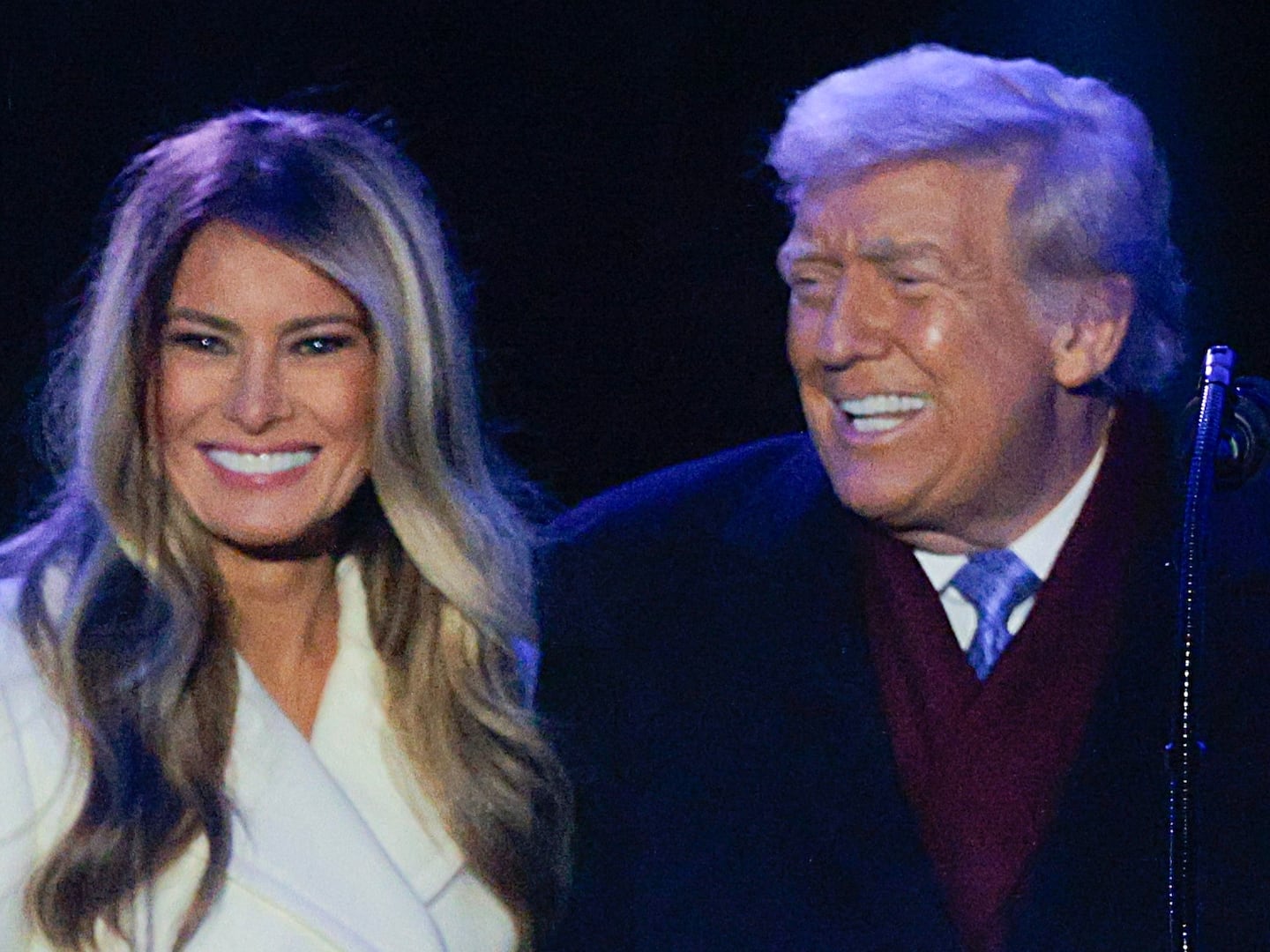The 2022 midterm elections may be a referendum on President Joe Biden, but turn on a TV in a battleground congressional district right now and you’re all but certain to see a Republican attack ad that could have run in 2020, or 2018, or any election cycle since 2010.
Amid seismic changes in American politics, at least one thing remains constant: Republicans are addicted to casting Nancy Pelosi as their foremost foil and biggest bogeyman in their campaign ads.
This fall, Republicans have launched dozens and dozens of ads linking the Speaker of the House to Democratic candidates.
Some are simple. In one ad, Rep. Dan Kildee (D-MI), a member of leadership, is called Pelosi’s “right-hand man.” In another, Rep. Abigail Spanberger (D-VA), a critic of Pelosi, was shown side-by-side with the Speaker, wearing the same color suit, and labeled as Pelosi’s “mini-me.”
Other ads are a little more creative. In one spot, an animation dramatizes Pelosi calling Rep. Kim Schrier (D-WA) on her cellphone. (The tagline: “When Nancy Pelosi calls, Kim Schrier answers.”) An attack ad on Rep. Chris Pappas (D-NH) claims that he is in “Pelosi’s pocket”—and makes the point by portraying a grinning Pelosi with photos of Pappas literally in her suit-jacket pocket.
No ad, of course, is complete without referencing whether a Democrat has voted “100 percent” with Pelosi, a tagline used in at least a dozen ads against incumbent lawmakers.
Biden, the overall top target of GOP criticism and attacks, might have been expected to win the starring role from Pelosi in this year’s attack ads. But according to a Daily Beast review of campaign ads from the two main House Republican outside groups, the Speaker remains their clear fixation.
The National Republican Congressional Committee, the party’s official House campaign arm, featured Pelosi in 12 spots, compared to eight for Biden. And in the last month, the Congressional Leadership Fund, the party’s main super PAC, featured Pelosi in 23 ads, versus 16 for Biden.
Should that trend continue, 2022 would mark the eighth election cycle in which Pelosi was the defining aspect of the House GOP’s messaging, dating back to the 2010 red wave in which Republicans launched the “Fire Pelosi” campaign after the passage of the Affordable Care Act. It’s unclear yet if 2022 will be the GOP’s most Pelosi-heavy election, but with the NRCC and CLF raising record amounts of cash, it miraculously could be.
This year, Republicans have an appealing alternative foil in Biden; he has averaged a disappointing 43 percent approval rating in the last month, according to RealClearPolitics, and his administration is at the center of debate on inflation and immigration—two issues Republicans would like the election to hinge on.
But GOP operatives see little reason to change the Pelosi playbook now, with their party favored to win control of the House. “She’s the gift that keeps on giving for Republicans,” said Calvin Moore, a spokesperson for CLF. “She’s universally known and universally despised in the electorate.”
Ironically, Pelosi’s unprecedented run as the preferred villain of GOP advertising may be coming to an end, even as the party clings as tight as ever to the strategy. While the 82-year-old Speaker is running for re-election, it is widely rumored in Washington that she will step down as leader if Democrats lose the House majority in November.
As Republicans drop Pelosi ads like it’s 2010, some are seriously contemplating a messaging future without her. “This may be the last time,” said Doug Heye, a Republican strategist who helped devise the original “Fire Pelosi” campaign. If they do finally fire Pelosi in 2022 after years of promising to do so, Heye said, Republicans will have to answer a tough question: “What do you do when it’s gone?”
Democrats have not exactly lost sleep over the continued dominance of the GOP’s Pelosi-heavy strategy. It is true that Pelosi is widely known, and is widely unpopular. But Congress, a deeply disliked institution, has unpopular leaders across the board.
In 2021, for instance, a Gallup poll found Pelosi with 40 percent approval, 4 points below Senate Majority Leader Chuck Schumer (D-NY) and 6 points above Senate Minority Leader Mitch McConnell (R-KY), the most unpopular political figure in recent years.
Many Democrats look at election results and simply are not convinced that Pelosi messaging makes much of a difference. “She is the north star for them,” said a Democratic operative with experience working on House races. “They’ve been doing this over and over, year after year… the interesting thing is, you don’t have a ton of evidence about whether it works or not.”
In 2010, the first year of the Fire Pelosi campaign, Republicans picked up over 60 House seats. In 2018, House Republicans ran an aggressive strategy that centered Pelosi in their fight to keep the majority amid Donald Trump’s unpopularity. They blanketed districts with Pelosi ads and put pressure on Democratic candidates to say whether they would support her as speaker. Ultimately, Democrats picked up 41 seats.
To many Democrats, there’s an undeniable undercurrent of sexism in the enduring nature of attacks on Pelosi, the first female House Speaker ever, and the audience that those attacks continue to find. “The gender piece cannot be ignored, unfortunately,” said the Democratic operative.
“Attacking the first woman Speaker of the House is a tired tactic that has never done anything to help Republicans,” said Chris Taylor, a spokesperson for the Democratic Congressional Campaign Committee, who added that “what does motivate voters is the threat of a MAGA Republican party dead set on ripping away Americans’ freedoms.”
Drew Hammill, a spokesperson and top staffer for Pelosi, said Republicans are trying to hide a “toxic agenda and toxic candidates” by using a “playbook that has been established to be unsuccessful.”
“That should raise red flags for them,” Hammill told The Daily Beast. “The last time they did this in a concerted way, we won the House.”
While Republican ads have focused more heavily on Pelosi, operatives believe that the added element of Biden’s unpopularity cannot be ignored. Indeed, there are plenty of ads linking House Democrats with Biden, and they often note that, as with Pelosi, a Democrat “voted Biden’s party line 100 percent of the time.”
“Nancy Pelosi is the most unpopular politician of all time, but Joe Biden is giving Pelosi a run for her money,” said Mike Berg, an NRCC spokesman. “That’s why we have been heavily utilizing both of them in our ads this cycle.”
Plenty of GOP spots do, in fact, feature both, and some that introduce only Biden. But the president has featured most prominently in battleground districts where he performed most poorly in the 2020 election.
The NRCC and CLF’s recent ads against Rep. Jared Golden (D-ME), for instance, focused on Biden. That makes sense: Trump won Golden’s district by over 6 points in 2020. In Michigan’s 7th District, which Biden won by just half a percent, Rep. Elissa Slotkin faces no fewer than four separate ads tying her to Biden.
In Iowa’s 3rd District, which Trump also won by half a point, Rep. Cindy Axne has been subject to some creative ads tying her to Biden, including one featuring IRS agents stalking through a cornfield, invoking Axne’s vote for Democratic legislation that, among other things, increased IRS enforcement.
But GOP dreams of a large House majority entail flipping seats that Biden won by relatively comfortable margins. While Republicans believe Biden is unpopular in many of them, it’s the relatively more Biden-friendly districts where the GOP Pelosi messaging has been most prominent.
Rep. Angie Craig (D-MN), considered one of the most vulnerable Democratic incumbents, represents a seat that Biden carried by 7 points. Attack ads have aggressively tied her to Pelosi: One sharp spot features footage of Craig, as a candidate in 2018, attacking her GOP opponent for voting the party line 95 percent of the time. It then cuts to Craig standing next to Pelosi and saying she voted with the Speaker 100 percent of the time.
Republican ads have also worked to tie non-incumbent Democratic candidates to Pelosi. One ad calls Tony Vargas, a Democrat running to unseat GOP Rep. Don Bacon in a Biden-won seat in Omaha, “Pelosi’s Favorite Nebraskan.” Another ad uses the past Pelosi praise of Eric Sorensen, running in an Illinois seat Biden won by 8 points, against him: one GOP ad says he “adores” Pelosi.
In the eyes of some Republicans, the purpose of their Pelosi messaging has evolved over time. Moore, of CLF, said the goal is to use her reputation as a liberal and a partisan to cast doubt on Democrats’ own claims to independence or party-bucking.
“Saying that someone votes with Pelosi 100 percent of the time is easy to understand, easy to show, and undercuts the brands of some of these battleground Democrats who pretend to be moderates,” Moore said.
When the dust settles after the Nov. 8 election, there will be close results in dozens of House races, and it will largely be impossible to say which messages and attacks caused any one candidate to win or lose.
But if Republicans take the majority, it will be a safe bet that 2022 will be their last hurrah with Pelosi. Within the Democratic caucus, possible successors to the Speaker include Reps. Hakeem Jeffries (D-NY) and Adam Schiff (D-CA), both of whom are known as progressives with a willingness to take it to Republicans.
Members of the so-called “Squad,” like Rep. Alexandria Ocasio-Cortez (D-NY), featured heavily in GOP attack ads in 2020. The Daily Beast found their presence scarce in NRCC and CLF ads so far this cycle, however.
Still, Republicans look at future leadership candidates and the party’s most progressive candidates and see opportunities.
“There will be plenty of ways to show how Democrats are out of touch as the new more progressive wing takes over the conference,” Moore said, envisioning a Pelosi-less future.
At the tail end of her long career, Republicans have no love lost for Pelosi, but many do acknowledge her effectiveness. In a strange way, their decade of election messaging focused on her will be part of the considerable legacy she will leave behind, whenever she does finally retire.
“When we launched the Fire Pelosi campaign, the whole thing was predicated on her being really good at what she does,” Heye said. “If she were an inept, floundering speaker, we wouldn’t have had Fire Pelosi.”







